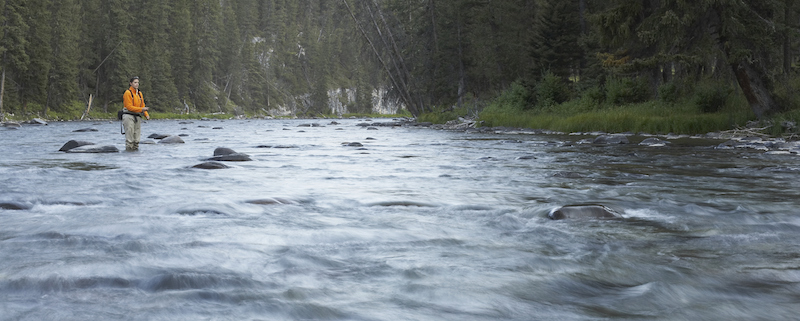
Ruling may lead to protracted and conflicting litigation over EPA’s Clean Water Rule.
In January, the U.S. Supreme Court issued a 9-0 decision in National Association of Manufacturers v. Department of Defense. The Court held that lawsuits challenging the 2015 “Clean Water Rule”—which revised the regulatory definition of “waters of the United States” that are subject to federal regulation under the Clean Water Act (CWA)—must be brought in federal district courts and not the courts of appeals.
This ruling, together with the Trump Administration’s strategy of using multiple rulemakings to rescind and replace the Clean Water Rule, has resulted in an increasingly complex tangle of litigation in district courts across the country. The upshot is continuing uncertainty on the scope of regulation under the CWA, an issue that is critical for many sectors of the economy and for environmental protection.
How did this predicament come about? In June 2015, the U.S. Environmental Protection Agency (EPA) and the Army Corps of Engineers jointly issued the Clean Water Rule, revising their prior regulatory definition of “waters of the United States,” established in the mid-1980s. More than 100 parties—including 30 states and multiple industry and environmental groups, who brought suit in 13 district courts and eight courts of appeals—challenged the Clean Water Rule almost immediately. From the outset, these suits presented the issue whether the rule was properly challenged in the courts of appeals, rather than in the district courts, under Section 509(b)(1) of the CWA.
Initially, EPA and the Corps asked the Judicial Panel on Multidistrict Litigation (JPML) to consolidate the district court proceedings in one forum, but the JPML declined the request. The JPML reasoned that, even though questions of statutory interpretation governed the lawsuits challenging the Clean Water Rule, application of the federal statute enabling the consolidation of district court cases turns on common factual issues.
Notwithstanding the JPML’s decision not to consolidate the district court proceedings, the JPML decided, through a separate random-selection process, to consolidate the court of appeals challenges in the U.S. Court of Appeals for the Sixth Circuit. In that case, the Sixth Circuit held that the CWA gave the courts of appeals jurisdiction over challenges to the rule. The Supreme Court granted certiorari on this jurisdictional question in National Association of Manufacturers, and the Sixth Circuit stayed further litigation on the merits, pending the Supreme Court’s decision.
The specific issue before the Court was the following: Does the Clean Water Rule pass as an agency action for which Section 509(b)(1) allows challenges to be brought in appellate courts?
EPA and the Army Corps, together with two environmental organizations, argued for court of appeals jurisdiction. They asked the Court to look to the functional character of the Clean Water Rule as, in effect, a geography-based “limitation” on pollutant discharges into waters of the United States. The agencies also argued that having a single appellate forum decide lawsuits over a national rule addressing issues of statutory interpretation would promote judicial efficiency.
In opposition, the National Association of Manufacturers, other industry groups, a coalition of 30 states, and a different set of environmental groups argued that the plain text of the statute dictated that any challenges must be brought instead in district court.
The Court ruled unanimously for the National Association of Manufacturers, finding the agencies’ argument to be “completely unmoored from the statutory text.” The Court conceded the potential inefficiency of allowing numerous lawsuits against a single nationwide rule to proceed in the district courts but held that the text and structure of the statute trumped this policy concern.
National Association of Manufacturers will have major practical consequences for past, pending, and future rulemakings related to the definition of “waters of the United States.” In February 2017, President Donald Trump issued an executive order calling on EPA and the Army Corps to rescind and revise the 2015 Clean Water Rule, “as appropriate and consistent with law.” The agencies have decided to implement this directive through three separate rulemakings:
(1) a “delay” rule, finalized in February 2018, that extended the “applicability date” of the 2015 Clean Water Rule to 2020, to keep the old definition in place while providing time for the agencies to rescind and replace the 2015 rule;
(2) a “Step One” rule, proposed in June 2017, which would rescind the 2015 rule and recodify the preexisting 1986 regulatory definition of “waters of the United States”; and
(3) a “Step Two” rule, to be proposed in the summer of 2018, that would establish an entirely new—and likely much narrower—definition.
After National Association of Manufacturers, each of these three rules—plus the 2015 Clean Water Rule itself—will be subject to simultaneous litigation in multiple district courts. Environmental groups and some states already have challenged the February 2018 delay rule in three separate district courts.
Meanwhile, litigation has been restarted in several of the pending district court lawsuits challenging the 2015 Clean Water Rule. The plaintiffs argue that these ongoing suits will not be moot until such time as any rule to rescind or replace the Clean Water Rule is finalized and finally upheld against whatever court challenges will be filed. Once the Step One and Step Two rules are finalized, these too will likely be challenged in multiple district courts.
Protracted litigation is almost certain, and conflicting rulings are possible and even likely. The upshot will be continuing uncertainty for stakeholders and regulators alike. Ultimately, although the statutory question resolved in National Association of Manufacturers may have been straightforward, the impact on future regulation and litigation will be anything but straightforward.
This essay is part of a series, entitled The Supreme Court’s 2017–2018 Regulatory Term.




